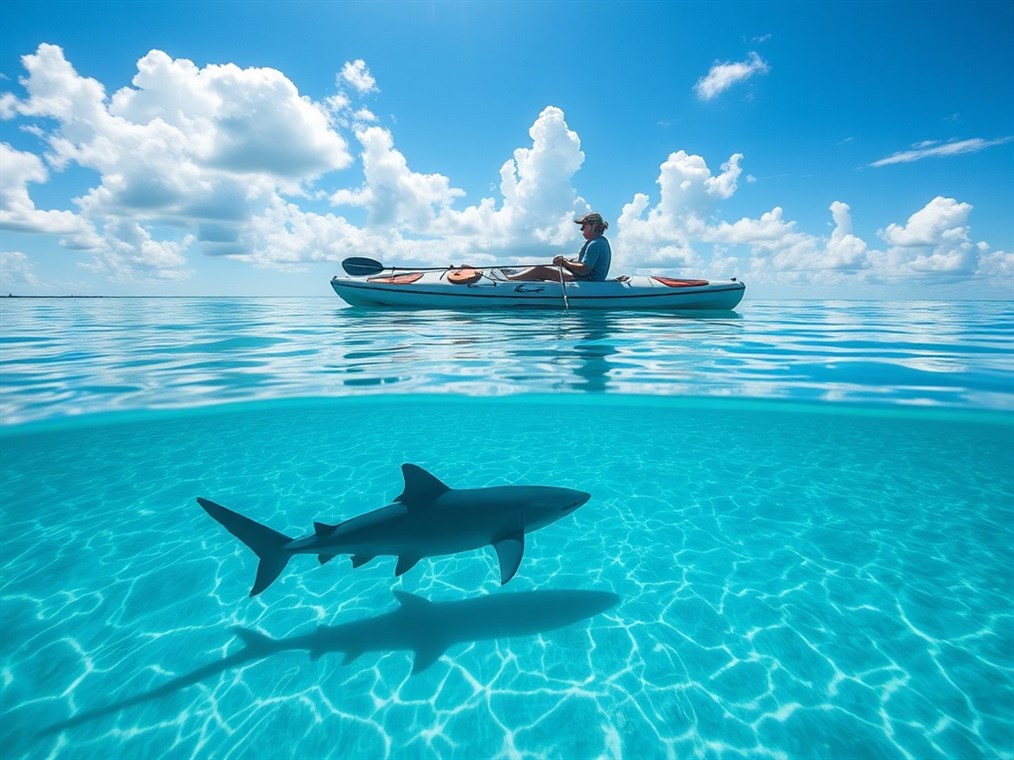
Kayaks and Sharks: Should You Worry? A Real-World Look
FactsKayaks and Sharks: Should You Worry? A Real-World Look
Okay, let’s talk sharks and kayaks. The idea of paddling around in the ocean with those toothy critters lurking below can be a little unnerving, right? But how much should you really worry? I’ve dug into the data and talked to some experts to give you the lowdown.
First off, the numbers. Shark attacks on kayaks? They’re pretty rare. I mean, really rare. We’re talking about a handful of incidents since forever. The Global Shark Attack File says there’ve been just 21 recorded attacks on kayaks since the early 1900s. Another source mentioned 65 incidents between 1989 and 2023, worldwide. And get this: in half the fatal cases, people were actually out of their kayaks, swimming. Bottom line? You’re way more likely to get struck by lightning! Seriously, like 75 times more likely. Kayakers are involved in a tiny fraction – about 0.35 percent – of all fatal shark attacks.
Now, it’s important to understand the difference between a shark encounter and a shark attack. Marine biologist Victoria Scott made a great point: most of the time, it’s just an “encounter.” Sharks are predators, sure, but they’re also pretty efficient. If a shark really wanted to attack, it probably would. More often than not, they’re just checking things out, maybe giving your kayak a little “taste test” to see if it’s edible. Spoiler alert: it’s not. Neither are we, apparently.
So, why do sharks sometimes approach kayaks? A few reasons:
- Mistaken identity: Think about it. Great whites and tiger sharks often hunt from underneath. From their perspective, a kayaker on the surface might look a lot like a tasty seal or sea lion. Oops!
- Curiosity: Sharks are curious animals. They might just be wondering, “Hey, what’s that?”
- Fishing: This is a big one. If you’re kayak fishing, you’re basically ringing the dinner bell for sharks. Bait, blood, struggling fish… it all attracts attention.
- Bad timing: Murky water, river mouths, and dawn or dusk hours? Those are all prime times for shark activity.
Alright, so how do you stay safe? Even though the risk is low, there are things you can do to minimize it even further:
- Avoid sharky areas: Stay away from places where sharks are known to hang out, like feeding grounds or murky river mouths. And definitely avoid kayaking after dark or before sunrise.
- Buddy up: There’s safety in numbers! Sharks are less likely to target a group.
- Stay cool: If you see a shark, don’t freak out. No splashing, no frantic paddling. Just calmly paddle towards shore.
- Bright colors: Use brightly colored kayaks and gear. You want to look like a kayak, not a seal.
- Stay informed: Check local shark reports before you head out. There are even apps like Sharktivity that track shark sightings.
- Respect their space: Don’t get too close to sharks, and never try to feed or provoke them.
- Consider protective gear: New wetsuit materials with super-strong fibers might offer some extra protection against bites.
What if a shark does approach? Here’s the plan:
- Stay calm: Seriously, panic is your enemy.
- Create distance: Slowly paddle away while keeping an eye on the shark.
- Be assertive: If the shark gets aggressive, give it a good whack on the snout with your paddle.
- Fight back: If attacked, go for the eyes and nose.
- Call for help: If you’re feeling threatened, use your radio to call for help and give your location.
One last thing: kayaks themselves. Most are made from tough plastic that can take a beating. While a shark bite could definitely damage your kayak, the kayak itself offers a bit of a barrier. And some high-end kayaks use super-strong materials like Kevlar.
So, there you have it. Shark attacks on kayaks are rare. By being smart, taking precautions, and staying calm, you can enjoy your kayaking adventures with a little less worry. The ocean is an amazing place, and with a little respect and preparation, you can have a safe and incredible time out there.
You may also like
Disclaimer
Categories
- Climate & Climate Zones
- Data & Analysis
- Earth Science
- Energy & Resources
- Facts
- General Knowledge & Education
- Geology & Landform
- Hiking & Activities
- Historical Aspects
- Human Impact
- Modeling & Prediction
- Natural Environments
- Outdoor Gear
- Polar & Ice Regions
- Regional Specifics
- Review
- Safety & Hazards
- Software & Programming
- Space & Navigation
- Storage
- Water Bodies
- Weather & Forecasts
- Wildlife & Biology
New Posts
- Diving Deep into Tangerine: More Than Just a Sunny Locale
- Jamaica Backpack Daypack Pockets Shopping – Review
- TEOYETTSF Climbing Backpack Multifunction Military – Buying Guide
- The Curious Case of Cavendish’s Classroom: Where Did This Science Star Study?
- Dragon Backpack Insulated Shoulder Daypack – Buying Guide
- ROCKY Hi-Wire Western Boots: A Rugged Review After a Month on the Ranch
- Vertical Curbs: More Than Just Concrete Barriers
- Regatta Modern Mens Amble Boots – Honest Review
- YMGSCC Microfiber Leather Sandals: Beach to Boardwalk, Did They Hold Up?
- Tangier: More Than Just a Backdrop in “Tangerine”
- DJUETRUI Water Shoes: Dive In or Doggy Paddle? A Hands-On Review
- Barefoot Yellow Pattern Hiking 12women – Is It Worth Buying?
- Koa Trees: How Fast Do These Hawaiian Giants Really Grow?
- DDTKLSNV Bucket Hat: Is This Packable Sun Shield Worth the Hype?